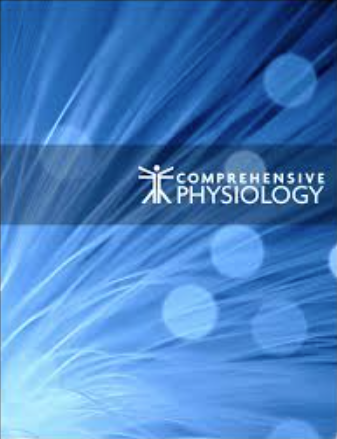求助PDF
{"title":"体温调节的昼夜节律调节睡眠/觉醒周期和24小时动脉血压模式。","authors":"Shahab Haghayegh, Michael H Smolensky, Sepideh Khoshnevis, Ramon C Hermida, Richard J Castriotta, Kenneth R Diller","doi":"10.1002/cphy.c210008","DOIUrl":null,"url":null,"abstract":"<p><p>Borbély proposed an interacting two-component model of sleep regulation comprising a homeostatic Process S and a circadian Process C. The model has provided understanding of the association between core body temperature (CBT) as a key element of Process C that is deterministic of sleep onset and offset. However, it additionally provides a new perspective of the importance of the thermoregulatory mechanisms of Process C in modulating the circadian rhythm of arterial blood pressure (ABP). Herein, we examine the circadian physiology of thermoregulation, including at the end of the activity span the profound redistribution of cardiac output from the systemic circulation to the arteriovenous anastomoses of the glabrous skin that markedly enhances convective transfer of heat from the body to the environment to cause (i) decrease of the CBT as a pathway to sleep onset and (ii) attenuation of the asleep ABP mean and augmentation of the ABP decline (dipping) from the wake-time mean, in combination the strongest predictors of the risk for blood vessel and organ pathology and morbid and mortal cardiovascular disease events. We additionally review the means by which blood perfusion to the glabrous skin can be manipulated on demand by selective thermal stimulation, that is, mild warming, on the skin of the cervical spinal cord to intensify Process C as a way to facilitate sleep induction and promote healthy asleep ABP. © 2021 American Physiological Society. Compr Physiol 11:1-14, 2021.</p>","PeriodicalId":10573,"journal":{"name":"Comprehensive Physiology","volume":null,"pages":null},"PeriodicalIF":4.2000,"publicationDate":"2021-10-12","publicationTypes":"Journal Article","fieldsOfStudy":null,"isOpenAccess":false,"openAccessPdf":"","citationCount":"6","resultStr":"{\"title\":\"The Circadian Rhythm of Thermoregulation Modulates both the Sleep/Wake Cycle and 24 h Pattern of Arterial Blood Pressure.\",\"authors\":\"Shahab Haghayegh, Michael H Smolensky, Sepideh Khoshnevis, Ramon C Hermida, Richard J Castriotta, Kenneth R Diller\",\"doi\":\"10.1002/cphy.c210008\",\"DOIUrl\":null,\"url\":null,\"abstract\":\"<p><p>Borbély proposed an interacting two-component model of sleep regulation comprising a homeostatic Process S and a circadian Process C. The model has provided understanding of the association between core body temperature (CBT) as a key element of Process C that is deterministic of sleep onset and offset. However, it additionally provides a new perspective of the importance of the thermoregulatory mechanisms of Process C in modulating the circadian rhythm of arterial blood pressure (ABP). Herein, we examine the circadian physiology of thermoregulation, including at the end of the activity span the profound redistribution of cardiac output from the systemic circulation to the arteriovenous anastomoses of the glabrous skin that markedly enhances convective transfer of heat from the body to the environment to cause (i) decrease of the CBT as a pathway to sleep onset and (ii) attenuation of the asleep ABP mean and augmentation of the ABP decline (dipping) from the wake-time mean, in combination the strongest predictors of the risk for blood vessel and organ pathology and morbid and mortal cardiovascular disease events. We additionally review the means by which blood perfusion to the glabrous skin can be manipulated on demand by selective thermal stimulation, that is, mild warming, on the skin of the cervical spinal cord to intensify Process C as a way to facilitate sleep induction and promote healthy asleep ABP. © 2021 American Physiological Society. Compr Physiol 11:1-14, 2021.</p>\",\"PeriodicalId\":10573,\"journal\":{\"name\":\"Comprehensive Physiology\",\"volume\":null,\"pages\":null},\"PeriodicalIF\":4.2000,\"publicationDate\":\"2021-10-12\",\"publicationTypes\":\"Journal Article\",\"fieldsOfStudy\":null,\"isOpenAccess\":false,\"openAccessPdf\":\"\",\"citationCount\":\"6\",\"resultStr\":null,\"platform\":\"Semanticscholar\",\"paperid\":null,\"PeriodicalName\":\"Comprehensive Physiology\",\"FirstCategoryId\":\"3\",\"ListUrlMain\":\"https://doi.org/10.1002/cphy.c210008\",\"RegionNum\":2,\"RegionCategory\":\"医学\",\"ArticlePicture\":[],\"TitleCN\":null,\"AbstractTextCN\":null,\"PMCID\":null,\"EPubDate\":\"\",\"PubModel\":\"\",\"JCR\":\"Q1\",\"JCRName\":\"PHYSIOLOGY\",\"Score\":null,\"Total\":0}","platform":"Semanticscholar","paperid":null,"PeriodicalName":"Comprehensive Physiology","FirstCategoryId":"3","ListUrlMain":"https://doi.org/10.1002/cphy.c210008","RegionNum":2,"RegionCategory":"医学","ArticlePicture":[],"TitleCN":null,"AbstractTextCN":null,"PMCID":null,"EPubDate":"","PubModel":"","JCR":"Q1","JCRName":"PHYSIOLOGY","Score":null,"Total":0}
引用次数: 6
引用
批量引用


